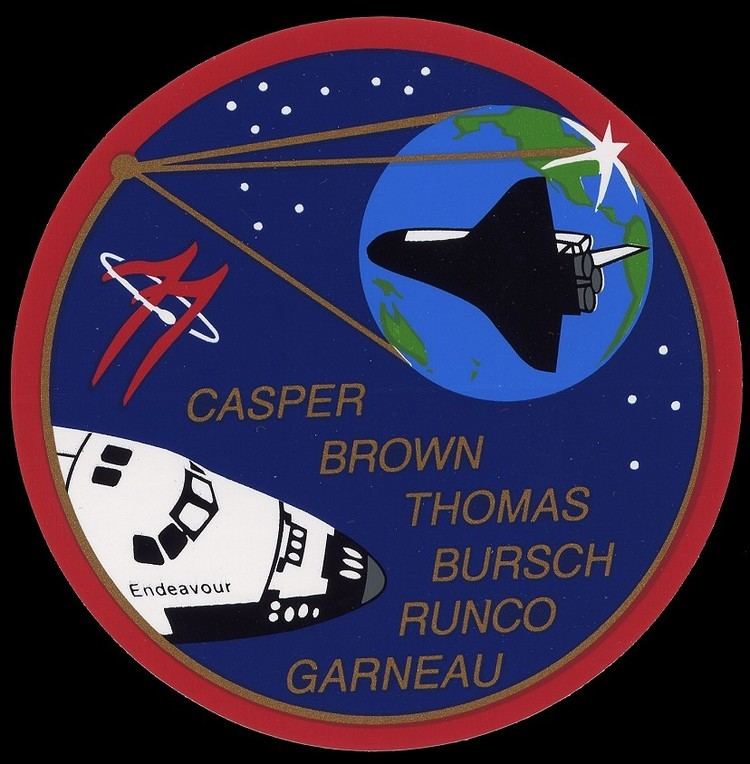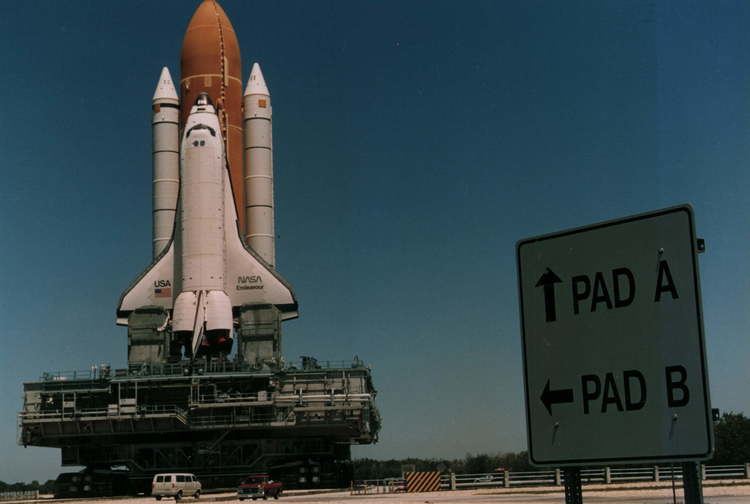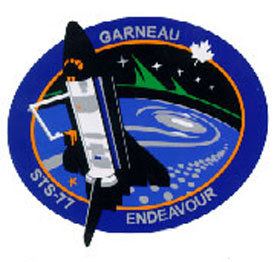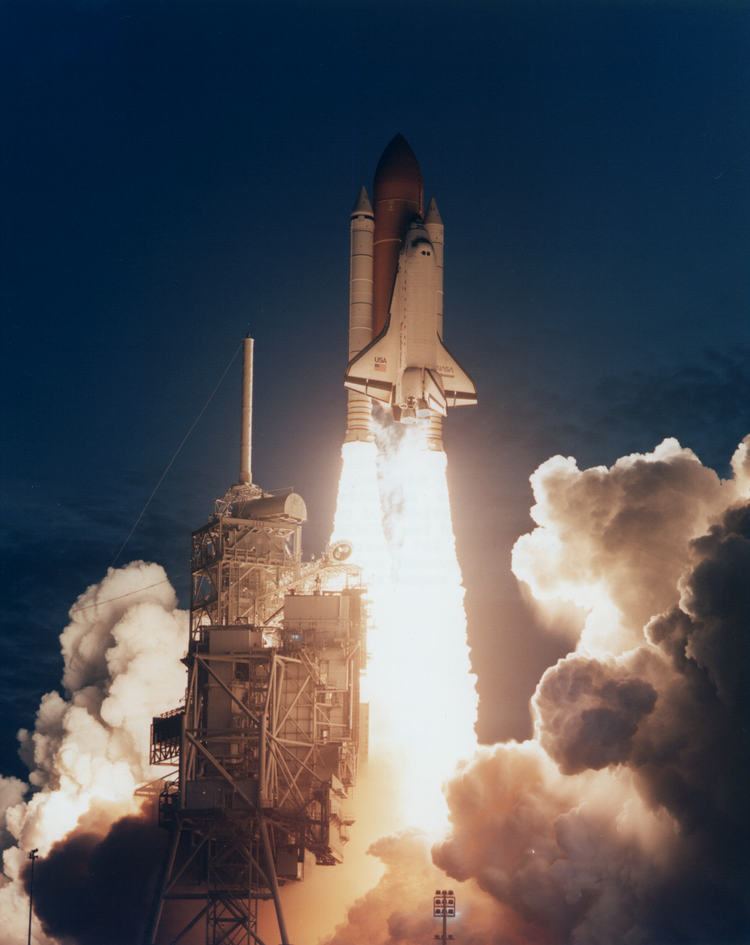Mission type Microgravity research SATCAT no. 23870 Period 1.5 hours Launch date 19 May 1996 Landing date 29 May 1996 | COSPAR ID 1996-032A Orbits completed 161 Apogee 287,000 m Dates 19 May 1996 – 29 May 1996 | |
 | ||
Mission duration 10 days, 40 minutes, 10 seconds Distance travelled 6,600,000 kilometres (4,100,000 mi) Members John Casper, Curtis Brown, Andy Thomas, Daniel W. Bursch, Mario Runco Jr., Marc Garneau | ||
Space shuttle flight 77 sts 77 post flight presentation
STS-77 was the 77th Space Shuttle mission and the 11th mission of the Space Shuttle Endeavour. The mission began from launch pad 39B from Kennedy Space Center, Florida on 19 May 1996 lasting 10 days and 40 minutes and completing 161 revolutions before landing on runway 33.
Contents
- Space shuttle flight 77 sts 77 post flight presentation
- Sts 77 mission highlights resource tape
- Mission highlights
- Mission insignia
- References
Sts 77 mission highlights resource tape
Mission highlights

NASA's flight of shuttle Endeavour was devoted to opening the commercial space frontier. During the flight the crew performed microgravity research aboard the commercially owned and operated SPACEHAB module. The mission also deployed and retrieved the Spartan-207/IAE (Inflatable Antenna Experiment) satellite and rendezvoused with a test satellite. A suite of four technology experiments known as the Technology Experiments for Advancing Missions in Space (TEAMS) also flew in the Shuttle's payload bay.

The SPACEHAB single module carried nearly 1,400 kilograms (3,100 lb) of experiments and support equipment for 12 commercial space product development payloads in the areas of biotechnology, electronic materials, polymers and agriculture as well as several experiments for other NASA payload organizations. One of these, the Commercial Float Zone Facility (CFZF) was developed through international collaboration between the U.S., Canada, and Germany. It heated various samples of electronic and semiconductor material through the float-zone technique. Another facility on SPACEHAB was the Space Experiment Facility (SEF) which grew crystals by vapor diffusion.

The Goddard Space Flight Center's (GSFC) Spartan-207 satellite was used to deploy and test the Inflatable Antenna Experiment (IAE) which laid the groundwork for future technology development in inflatable space structures. It tested the performance of a large inflatable antenna during a ninety-minute mission. The antenna structure was then jettisoned and the SPARTAN-207 spacecraft recovered at mission end.

Inside Endeavour's cargo bay the four TEAMS experiments operated throughout the mission. They included the Global Positioning System (GPS) Attitude and Navigation Experiment (GANE) to determine to what accuracy the GPS system can supply attitude information to a space vehicle; the Vented Tank Resupply Experiment (VTRE) to test improved methods for in-space refueling; the Liquid Metal Thermal Experiment (LMTE) to evaluate the performance of liquid metal heat pipes in microgravity conditions, and the Passive Aerodynamically Stabilized Magnetically Damped Satellite (PAMS) payload to demonstrate the technology of the principle of aerodynamic stabilization in the upper atmosphere. Cameras on the shuttle recorded the PAMS satellite as it was deployed and tracked its movements.

Secondary experiments on the flight included the Brilliant Eyes Ten Kelvin Sorption Cryocooler Experiment (BETSCE), the Aquatic Research Facility (ARF) and the Biological Research In a Canister (BRIC) experiment.

Also onboard was the Plant-Generic Bioprocessing Apparatus (P-GBA) designed by BioServe Space Technologies. Several plant species were flown in this double middeck locker configurated plant growth chamber. Investigations on plant growth in micro-gravity as well as research on the feasibility of agriculture in space were successfully carried out.
A Coca-Cola fountain dispenser (officially a Fluids Generic Bioprocessing Apparatus-2 or FGBA-2) was developed for use on STS-77 as a test bed to determine if carbonated beverages can be produced from separately stored carbon dioxide, water and flavored syrups and determine if the resulting fluids can be made available for consumption without bubble nucleation and resulting foam formation. The unit held 1.65 liters each of Coca-Cola and Diet Coke. The original FGBA flew on STS-63.
Mission insignia
The two red portions of the NASA logo on the left of the insignia symbolize the flight's numerical designation in the Space Transportation System's mission sequence.
